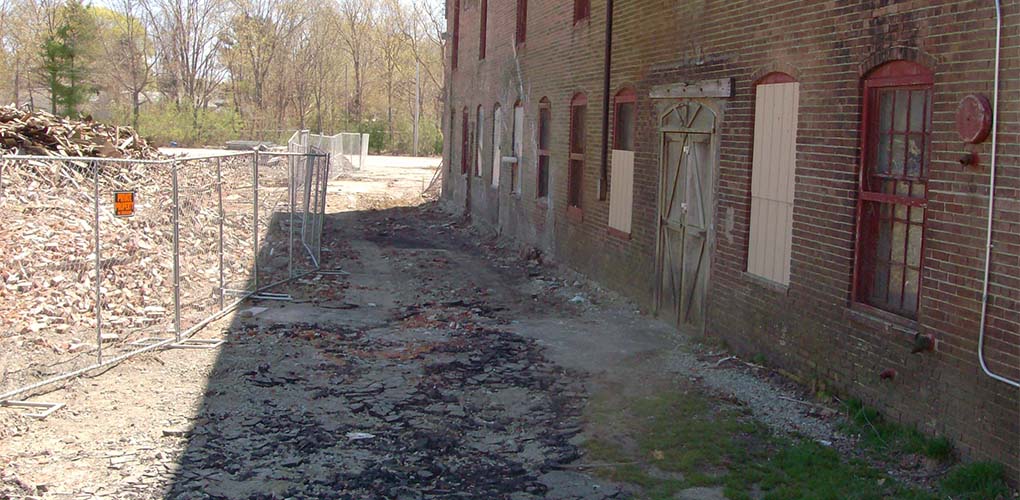100 and 104 Oak Street Brownfields Assessment
Taunton, Massachusetts
The Oak Street site has a long history of industrial use, as the properties were occupied by Taunton Oil Cloth Company from circa 1888 to at least 1937. Various businesses, including Columbia Electric, occupied the parcel until the building burned in 2013. In September of 2006, a subsurface investigation was conducted and barium, cadmium, chromium, and lead were detected in soil at concentrations above their respective Massachusetts Department of Environmental Protection’s (MassDEP’s) RCS-1 reportable concentrations. Trichloroethene (TCE) and vinyl chloride (VC) were detected above the RCGW-2 reportable concentrations in the groundwater.
BETA was retained by the City of Taunton to complete an investigation at the site with the following objectives:
- Identifying potential Imminent Hazards in the surficial soils (1 to 2 below grade) in the southern and western potions of 100 Oak Street. As an innovative and cost-effective approach, BETA has proposed field screening for metals using an XRF in addition to laboratory analysis.
- Assessing the site for possible ongoing sources or threats of release including a supplemental geophysical survey to identify if underground storage tanks exist at the site.
- Identifying critical exposure pathways and potential migration pathways including an assessment of surface water and sediment in the Cobb Brook.
- Performing supplemental sampling in previously uninvestigated areas. This includes the advancement of up to fourteen soil boring and the installations of groundwater monitoring wells.
BETA prepared a site-specific Quality Assurance Project Plan (QAPP) in accordance with guidance provided by the U.S. Environmental Protection Agency (EPA) Region 1 under its Brownfields program. In 2014, BETA oversaw the implementation of the Phase II ESA that including soil borings, surficial soil sampling, groundwater monitoring wells, and the sampling of soil, groundwater, surface water, and sediment. Extensive areas of impacted soil and groundwater were identified that will require remediation during redevelopment of the site.


